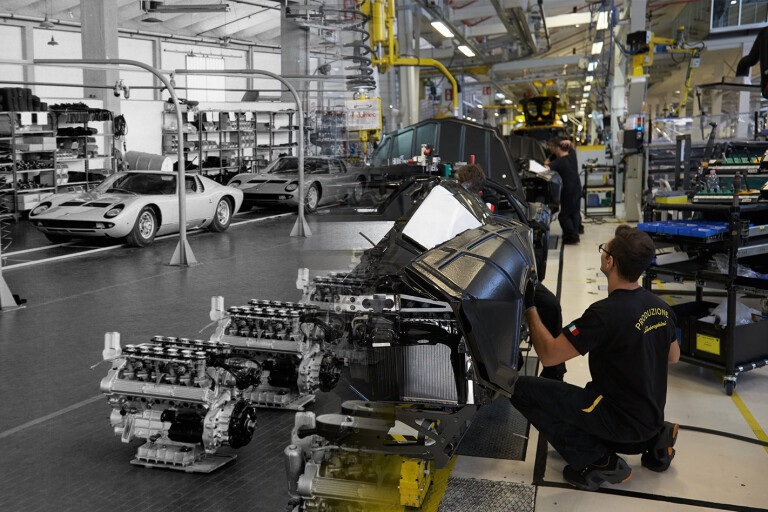
THE CONTADINO who owned the fields adjoining the Lamborghini factory must feel like a lottery winner. His ship’s come in.
First published in the June 2017 edition of Wheels Magazine, Australia’s most experienced and most trusted car magazine since 1953.
For decades, the factory that Ferruccio Lamborghini built in 1963 was big enough to knock out two or three hundred cars a year. But since Audi bought Automobili Lamborghini SpA in 1998 and poured in money and resources, production has rocketed to last year’s record 3457 cars. The Urus SUV coming in 2018 should double that. And where, in the grim days before Audi, there were 300 employees, now there are 1415, and Urus will need another 500.

So the farmer over the back wall got lucky. To get the space it now needs, Lamborghini bought his land. Makes you wonder if he could mosey around to the sales office and place an order for one of the cars.
These days, the plant at 12 via Modena, Sant’Agata Bolognese, on the Emilian plain 17km east of Modena and 24km north-west of Bologna, looks familiar albeit bigger and smarter. The long Lamborghini script still stretches along its roof. But the facade of the old offices and main entrance fronting the production hall has been freshened and abuts the new museum’s long, high, glass gallery. In the 1970s, when I came here often to drive the latest and greatest, the only old Lamborghinis were customers’ cars in for service and forlorn-looking prototypes and mules dumped out the back.
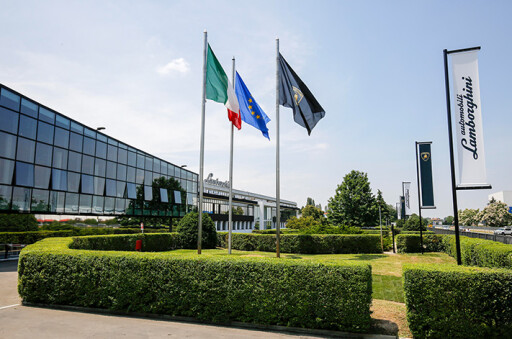
Where there was once a taciturn gateman, now two smart, black-suited, multi-lingual young women command the slick reception centre. They check your ID (passports preferred), assign you a clip-on pass and slap stickers over your phone’s lenses in case you’re tempted to snap a new model as it burbles out of the R&D workshops. It doesn’t seem long ago that the prototype Countach – now a star in the museum – was easing from the same workshops, with legendary Kiwi test driver Bob Wallace at the wheel.
Back then, you might have encountered a couple of suppliers coming and going, or the odd owner bringing a car in for attention. Nowadays, scores of visitors – 65,000 a year – mill about outside the museum, waiting to ogle five decades of Lamborghinis and tour the factory.
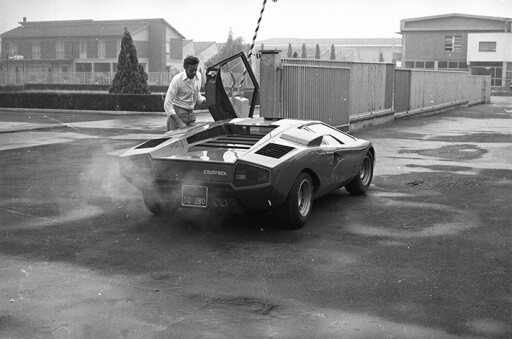
When their guide – like the impressively knowledgeable Maria Federica Fazzini – leads them through to the assembly lines, in the original sawtooth-roofed hall just behind the museum, they may be surprised by the serenity. If they’ve seen plants building thousands of cars a day, the Lamborghini factory will seem like a cathedral of calm. The clue is in the large digital clocks suspended above the production lines. The Aventador’s counts down from 91 minutes. That’s the ‘takt time’ – to use the German term now embedded at Sant’Agata – governing how long each body, steadily becoming a car, spends at each assembly station. Anyone on the line can see how long they have before the line moves on. It’s a deliberately relaxed duration that lets the 12 teams work unhurriedly as they wiggle into place the plethora of components. They start with the wiring harness and finish with the suspension and wheels before the fuel and water go in, the oil is topped up, the electronics programmed and the engine fired up. Five times a day you’ll hear a 6.5-litre V12 snarl into life. Nearby, at the end of the Huracan’s line, the 5.2-litre V10s will do it 11 times.
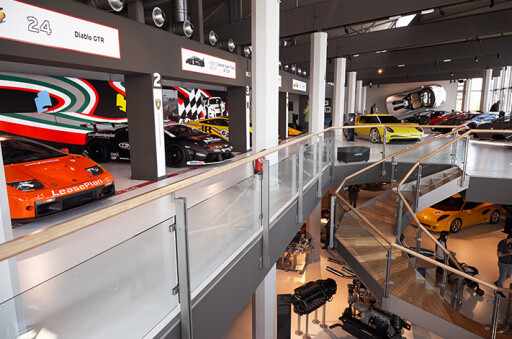
Along the way, the black-gloved fitters screw and bolt, run hands and eyes over joins and panels, and check, tweak and adjust. For all that the factory is now much bigger, more mechanised, far better-equipped and making thousands more cars of immensely greater complexity and quality, dedicated Emilian workers still do most of the work by hand. Ranieri Niccoli, 48, the former aeronautics engineer who is now Lamborghini’s Industrial Director, says: “You have to love building these cars. They are not easy to assemble. Just look at the engine compartment: there is no spare space. Inserting a powertrain as big as the Aventador’s demands fantastic precision. That’s why we have what some would consider a huge takt time. It lets the assembly teams get it right, without feeling any pressure other than pride in what they’re doing.”

Niccoli’s men and women wear smart black Lamborghini-embossed polo shirts and matching gold-trimmed black pants, in sharp contrast with the wear-what-you-like days when there was a mix of jeans and striped shirts, dust jackets and overalls. On the heads, mohawks, fades, tapers and undercuts have replaced Afros and mullets.

Over in Giuseppe Marescalchi’s engine department, the amount of glistening alloy still takes your breath away, just as it did when Bob Wallace first walked me through in 1973. The milling machines are gone now, and there’s no-one hunched over vices filing rough edges off fresh castings. The V12’s components come in ready-formed, checked for perfection, and the V10s are trucked down from Audi’s plant in Hungary. As ever, it’s a spell-binding place to linger and watch the technicians bolting work-of-art crankshafts into the glittering blocks, connecting up conrods, sliding in 12 pistons – each shiny as a jewel – and working through the painstaking process of building a Lamborghini V12.
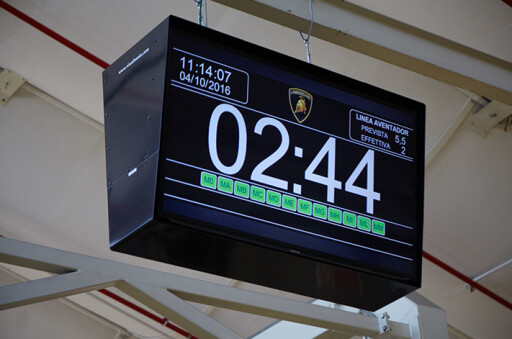
Each V12 will spend an hour and 40 minutes in the dyno room revving through a computer-controlled test pattern to make sure it can boast 544kW. That’s why, when you see that massive powerplant being eased into a chassis every 91 minutes, you’ll notice that its exhausts are tinged brown by the heat of its initiation.
If the factory, tools and processes at Sant’Agata are much more sophisticated now, so are the cars. The once-advanced pressed and drilled steel platform of the Miura or the lattice-like welded spaceframe of the Countach are worlds away from the Aventador’s top-to-bottom carbonfibre monocoque, or the composite and aluminium mix of the Huracan. Lamborghini is now committed to being a leader in composites for cars. “They’ve become part of our DNA,” says Luciano De Oto, 46, head of Lamborghini’s Advanced Composite Research Centre.
Sant’Agata’s composites prowess dates back to 1983, not long after McLaren introduced carbonfibre to Formula 1. Then-boss Giulio Alfieri commissioned a composites project to see how much weight might be cut from a Countach. Fortune smiled: aeronautics engineer Rosario Vizzini, who’d been at Boeing in Seattle designing the 767’s carbonfibre vertical stabilizers, had just returned to Italy. Lamborghini snapped him up and got an injection of cutting edge composites knowledge. Vizzini’s project was the carbonfibre frame and body of the Countach Evoluzione. It was 500kg lighter but too expensive to build. Steadily, though, more and more composites became part of Lamborghinis.

Now, through an eight-year-long partnership with Boeing, joint research with Callaway (the golf equipment maker), investment in a state-of-the-art composites facility, and building up a team of more than 60 experts in Italy and Seattle, Lamborghini is confident it leads in composites in cars. “We are the only car maker with complete knowledge, in-house, of the entire span of composites from the start of an idea to the delivery of a product, and right through to repairs,” says De Oto, who started with the Minardi F1 team then ran Ferrari’s F1 wind-tunnel tests before joining Lamborghini in 2001.
Does Lamborghini’s commitment to composites square with the Volkswagen Group’s desire for increased platform sharing? “We work closely with group marques but if a technical solution becomes too much of a compromise it’s not a solution."
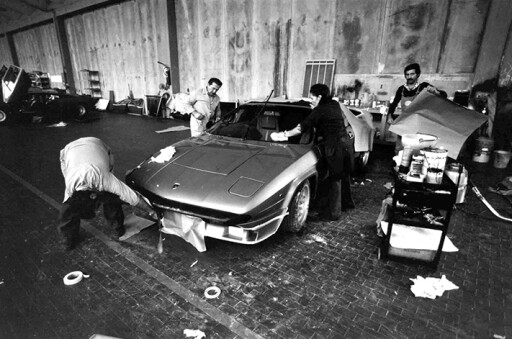
“You can do the best modular body in white to serve all the platforms but in the end it’s a shitty body in white for everybody. We tried to imagine the Aventador in a platform project but it wasn’t possible. Porsche wanted the fuel tank in the front. For us that’s a no-go. Another brand wanted less carbonfibre because of a different cost target."
“The Huracan is a good example of one that worked. We are trying to conceive a common platform for another sports car but can’t say yet whether it will be successful because there are so many differences between the brands. My opinion is that, on a super sports car, having a platform that’s good for everybody will always be a compromise.”
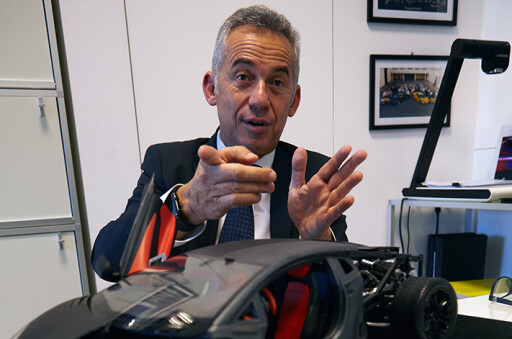
Maurizio Reggiani, Lamborghini’s 57-year-old R&D Director, reinforces the impression that Sant’Agata now has enough sway to nudge compromises its way with issues like who will lead the Huracan/Audi R8 replacement’s development.
“We have one important mother,” Reggiani says. “She has allowed us to make this huge investment, achieve the results we’re now enjoying, and create a dream like the Urus in a short time.”
Reggiani, an engine man who came to Sant’Agata in 1994 after six years at Maserati and six at Bugatti, has links to Lamborghini’s engineering roots: he has worked with Paolo Stanzani and Gian Paolo Dallara, Lamborghini’s founding engineering giants. He points to a treasured photograph signed by Dallara, Stanzani and designer Marcello Gandini. “These three, as young men, built the original dreams of Lamborghini,” he says. “Dallara and Stanzani were innovators; visionaries who understood what Lamborghini stood for. They wanted to make the purest incarnation of a super sports car. Bob Wallace understood how to translate the sensation of driving a sports car on the road, and communicate that back to the R&D team.”
Mindful of his legacy, Reggiani is driving Lamborghini full-tilt into a tech-dense, scientifically analysed supercar position that includes aeronautical technology for chassis control, four-wheel steering that works up to 200mph and simulates shrinking or stretching the wheelbase, sensors embedded in tyre rubber, revolutionary aerodynamics, and neurological research into how drivers react.

He talks enthusiastically about the Piattaforma Inerziale (inertial platform) vehicle dynamics control system introduced with the Huracan. “We’ve arrived at a level of performance where we need to give customers confidence that they can use that much performance safely. The more you give them that feeling, the more they love the car. Its fundamental that they must not be worried about using it.”
Yes, but some testers thought the original Huracan understeered too much. Reggiani says: “My immediate response is: what mode are you in? In Strada, which is biased towards understeer, if you’re not a great driver you will have great safety because you can enter bends without the rear moving too much. In Sport, we assume your skill is better so we give you more tail movement by adjusting front-to-rear torque. In Corsa, you have neutrality for optimum speed through a corner.” Nevertheless, he confirms that Lamborghini did mildly revise the front-to-rear torque calibration for the Huracan Spyder to make it more neutral in Strada.
Now there’s the four-wheel steering standard on this year’s Aventador S. At low speed, the rear wheels turn in the opposite direction from the fronts to virtually shorten the wheelbase and boost manoeuvrability. At speed, the rear wheels turn in parallel with the fronts. “It’s like elongating the wheelbase by 500mm,” says Reggiani. “It gives us great stability at high speed.”

Making it work meant long sessions with Pirelli to sort rear tyres. “We started with the same tyres both ends but were obliged to develop specific rear P Zeros that can steer at six degrees.” Next up with Pirelli is a project to embed micro sensors in tyre rubber to measure load, angle of load, and temperature related
to handling and speed.
The Aventador S’s more sophisticated and dramatic nose – which generates 130 percent more downforce – rear panels, wing and diffuser are aerodynamically focused to increase stability across a wide speed range. Lamborghini has learned a lot from working with Dallara on its Huracan Super Trofeo and GT3 race cars. The Huracan Performante’s ingenious ALA active aerodynamic system is a direct practical application of this work. “Venturi effect is really important,” Reggiani says. “It’s the only thing that increases downforce without penalising driveability. Aerodynamics and weight are the two pillars where we will push to innovate as much as possible.”
Lamborghini is also continuing the research program with the neurology faculty of Rome’s Sapienza University that began during the Huracan’s development. It’s to learn more about drivers’ reactions. The scientists discovered that, in emergencies, the right side of the brain manages the left hand. So the Huracan’s turn indicators and headlight flashers are tabs on the left of the wheel where they can be worked with your left thumb. “This kind of analysis helps us be more scientific about control layout.”
What about engines? In a world moving to smaller turbocharged units, and electrification, Lamborghini’s smallest engine is a 5.2-litre V10. “Our job is to continue to be flag-bearers for the naturally aspirated V12 and V10,” says Reggiani. “New rules governing sound, fuel consumption and emissions, and taxation, will kill today’s big naturally aspirated engines. When that happens, the big task is to ensure that what comes next has the same emotion and performance.”

The first step is Urus’s turbocharged V8 – the most powerful in its class, aimed at making Urus the fastest SUV. But Reggiani says getting the sound right has been a challenge. “We have to make sure all the DNA is intact,” he says. “Urus will be the first super sports luxury SUV. It will define a new category in power and performance. Everybody who gets into it must know immediately that they’re in a Lamborghini. That means sound, engine responsiveness and spirit. Driving it will be about luxury but most importantly the dynamic experience expected of a Lamborghini. It will have space and comfort with technologies under the bonnet, in the cabin and in design that make it clearly a Lamborghini.”
A year after launch, the petrol V8 (Reggiani makes it clear that diesels aren’t on Lamborghini’s agenda) will be joined by a hybrid, important not only for the SUV but to lower the fleet average for emissions and consumption. Hybrids for the sports cars are another matter. Although the 2014 669kW Asterion plug-in hybrid concept showed how Lamborghini can include electric power, and it has all the Volkswagen Group’s knowledge and systems to draw upon, resistance to adding 250kg or so means Sant’Agata will hold off introducing hybrid sports cars in volume until battery weights decrease and range increases. The V12 will continue until the end of the Aventador’s production life in 2022 “and possibly beyond” according to Reggiani.

Spontaneously, he talks joyously about the freedom of being an engineer at Lamborghini now – of being able to plan long range, scouting out new technologies (“the best in the world, not just in the car industry”) and new ways of engineering performance cars while focusing on maximising profit. “We are living a dream. We are able to scope what the Lamborghini of the third millennium can be.”
His exuberance sums up the atmosphere at Sant’Agata now. While, for most of Lamborghini’s 54-year history, brilliant engineers and dedicated employees somehow, often against the odds, kept Ferruccio Lamborghini’s vision alive, they never enjoyed this kind of confidence, and this kind of capability. Stephan Winkelmann, through his 11-year stint as CEO, guided the company to this place of new dreams, and left it in rude health when he handed over to Stefano Domenicali: ex-Ferrari, locally educated and steeped in the automotive culture of Emilia-Romagna.
You get the feeling that having an Italian in charge again is the icing on the cake.

COMMENTS